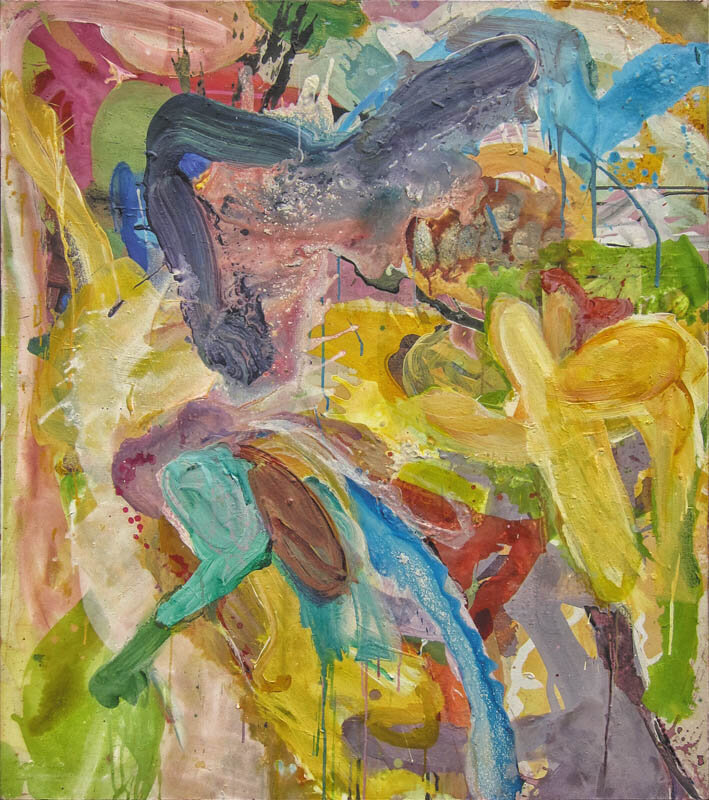În ochiul artei* Reflectarea picturilor Mariei Zgraggen: apropiere, distanță și conceptul de peisaj

In the eye of the art* Reflecting Maria Zgraggen’s Paintings: Closeness, Distance and the Concept of Landscaping.
| Modul în care recunoaștem și reacționăm la materiale, forme, culori, structuri și distanțe în lumea din jurul nostru definește modul în care vedem. Ajungem la înțelegerea mediului care ne înconjoară cu ajutorul tuturor simțurilor noastre. Atunci când ieșim din mediul construit și ne reflectăm impresiile vizuale avute, este posibil să facem, după cum spunea W.J.T Mitchell, „muncă de peisagiști”1. Mitchell argumentează într-un mod destul de plauzibil că nu există categoria artistică intitulată „peisagistică” . Iar el nu este singurul care susține că este momentul să lăsăm în urmă conceptul de „gen artistic” în general. Ceea ce pare mai degrabă adevărat este faptul că portretele, naturile moarte și peisajele sunt rezultatul unei întrețeseri complicate dintre tradiție și interesele conectate la ceea ce discernem în mediul înconjurător. Arta noastră este năpădită de coduri care se pot pierde rapid, iar în cele din urmă, așa cum nu știm exact pe cine vedem în portrete sau care era rolul tabloului la vremea sa, plantele și copacii rămân acolo, așa cum au fost văzute, iar ceea ce se instalează definitiv este viziunea artistului.
Așadar, cum vedem mediul înconjurător în zilele noastre? Ce vedem atunci când ne uităm pe geam, când ne permitem să facem acea excursie în munți sau să mergem câteva ore pe jos peste șesuri și prin păduri? Ce trăiesc exact grădinarul și fermierul în timp ce lucrează pământul? Ce văd urbaniștii locali și politicienii atunci când examinează diversele posibilități pe care le oferă terenurile virane? Pentru oamenii din zilele noastre, atât de dependenți de viața citadină modernă, aceste deplasări care presupun priveliști naturale sau prin chiar inima naturii sunt adeseori întâlniri rarisime cu natura. Cel mai adesea, ele reprezintă o formă de terapie sau o întoarcere bine-venită la o reflecție senzorială asupra timpului. În calitatea noastră de vizitatori în natură, putem face uz de metafora „peisaj”; pe de altă parte, putem la fel de bine să o dăm uitării și să începem să ne perfecționăm capacitatea de a înțelege și de a ne poziționa în mod conștient în prezent și de a încerca, de exemplu, să abordăm distanța și apropierea, combinând ceea ce știm despre decorul în care ne situăm cu ceea ce percepem. De a relaționa ceea ce este foarte departe și ceea ce este aproape și de a le coordona cu simțurile corpurilor noastre. Așadar, peisagistica poate deveni „procedura” de instituire a unei relații cu împrejurimile noastre prin intermediul unor teme și proporții pe care le putem descrie, gestiona și despre care putem discuta. Suntem conștienți că facem parte din mediul nostru și că suntem creatori activi ai contextelor noastre. Aici, la fel ca în nenumărate alte contexte, operele de artă reprezintă o modalitate de sporire și înțelegere a experienței noastre. |
| Citiți textul integral în numărul 5/2013 al revistei Arhitectura |
| Note:
* Titlul este o sintagmă creată de Maria Zgraggen. 1 W.T.J. Mitchell (ed.) Landscape and Power, University of Chicago Press, 1994. |
| Recognizing and reacting to materials, shapes, colours, structures and distances in the world around us define our seeing. We create an understanding of the surroundings through all our senses. When we move outside the built environment and reflect our visual impressions we may be what W.J.T Mitchell has called “landscaping”1. Mitchell makes plausible that the art category of “a landscape” does not exist. He is not alone in asserting that it is time we leave the concept of “art genres” in general. Rather, portraits, still lives, and landscapes are the results of an intricate weaving of tradition and interests connected to that which we see into our surroundings.
Our art is stuffed with codes that may get lost quickly and in the end, just as we do not know who we really see in the portraits or what the role of the painting was in its day, the plants and trees stand there, left as they were seen. And the artist’s vision takes over. So how do we see our surroundings today? When we look out of the window, when we treat ourselves to that day of trekking in the mountains or some hours walk by foot past fields and into forests? What does the gardener and the farmer experience working with the land? What do the regional planners and the politicians see when they survey the possibilities of their free square meters? For modern screen-and-town-conditioned humans those movements with and within views are often rare meetings with nature. More often than not they are a form of therapy or a welcome return to a sensuous reflection on time. As visitors in nature we may use the metaphor “landscape” but basically could also just forget about it and start working on our ability to take in and position ourselves consciously in the present and try to deal, for instance, with distance and closeness, combining what we know about the setting we are in with what we perceive. Bringing that which is very far away and that which is close in relation to each other and coordinating it with our bodies’ senses. Landscaping may then be the “procedure” of establishing a relation to our surroundings through themes and proportions we can describe, handle and exchange about. We are aware of being a part of our environment and are active creators of our contexts. Here as in so many other contexts art works are a way to enhance and understand our experience. |
| Read the full text in the print magazine. |
| * The title is a phrase coined by Maria Zgraggen.
1 W.T.J. Mitchell (ed.) Landscape and Power, University of Chicago Press, 1994 |
Photos: © Bill Hodgkinson

